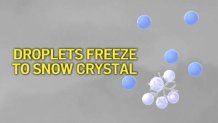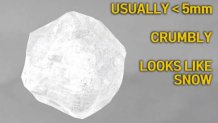Rain and low-level snow are in the forecast for Tuesday and Wednesday in Southern California when a storm sweeps into the region.
Overnight thunderstorms mean we also have a chance of seeing hail or graupel — a form of precipitation that might often be mistaken for snow and probably isn't even recognized by your spellcheck.
Here's what to know.
What is hail?
Get top local stories in Southern California delivered to you every morning. >Sign up for NBC LA's News Headlines newsletter.
- Hail can occur in many temperatures.
- Solid stones of ice that are usually round.
- Will bounce if small enough.
- Will not break apart easily.
- Generally larger than a pea.
What is graupel?
- Temperatures generally need to be colder than 45 degrees to occur.
- Look for small and crumbly pellets of ice.
- Graupel comes in odd shapes, not necessarily round.
- Will usually deform on contact with a surface or break apart (rarely bounces)
How does graupel form?
Graupel forms when snow crystals fall into supercooled (freezing) water droplets. The droplets then freeze to the crystal in a process called riming or accretion.

Other water droplets ‘glue’ the rimed ice crystals together.

Graupel shapes are irregular, and usually elongated because of air resistance.


